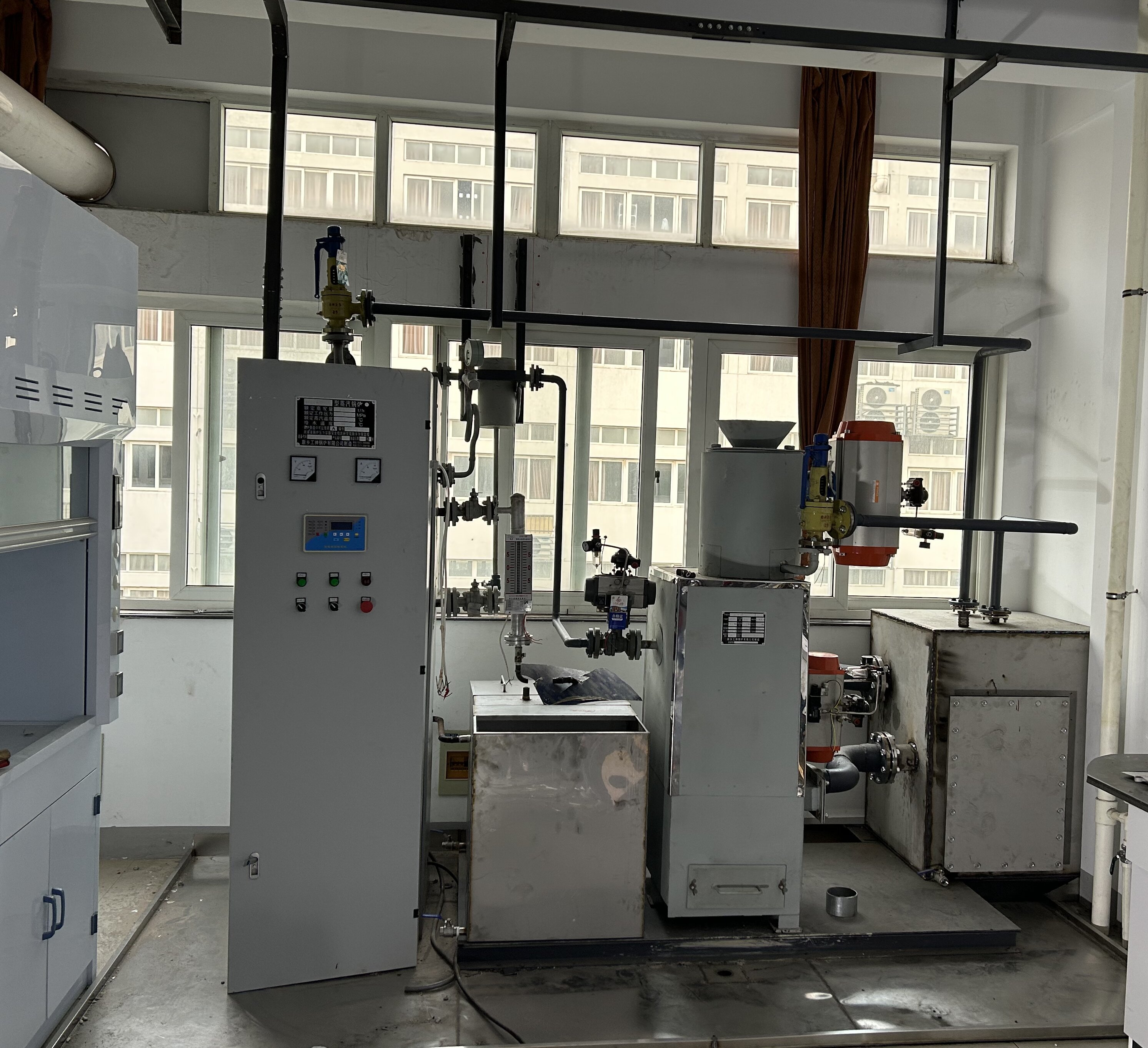

Ⅰ. Autoclave Introduction
● Structural Features
Autoclave, also known as curing kettle or pressurized steam vessel, is a large-scale pressure container characterized by substantial volume and heavy weight. It finds extensive applications.
● Provided by Autoclave Manufacturers:
Used for steam curing of building materials including aerated concrete blocks, concrete pipe piles, sand-lime bricks, fly ash bricks, microporous calcium silicate boards, new lightweight wall materials, insulated asbestos boards, and high-strength gypsum. Inside the autoclave, the hydrothermal reaction of CaO–SiO₂–H₂O is completed. It also widely applies to rubber products, wood drying and preservation, nonferrous metal smelting, oil/coal impregnation for refractory bricks, composite glass steam curing, high-pressure treatment of chemical fiber products, canned food sterilization, pulp cooking, cable vulcanization, fishing net shaping, as well as pressure-curing processes in chemical, pharmaceutical, aerospace, insulation materials, textile, and military industries. Most autoclaves in China are produced in Changzhou using German-imported technology. We professionally manufacture and sell various specifications of autoclaves and pressure vessels – open to cooperation.
● Structural Classification
- Vessel Category: Class I or II
- Primary Pressure-Bearing Material: Vessel body and cover use Q345R steel plates compliant with GB/T713.
- Flanges: Forged integrally from Q345R, meeting NB/T47008-2010 Class II standards. Each undergoes ultrasonic testing per NB/T47013.3-2015.
- Door Configuration: Through-type (covers at both ends) or Dead-end type (cover at one end).
- Cover Opening: Toothed quick-opening structure. Drive modes: manual, electric, pneumatic, hydraulic. Equipped with door safety interlock.
● Main Components
Consists of vessel body, cover assembly, swing mechanism, hand-cranked reducer, safety devices, supports, insulation layer, sealing system, pipelines/valves/gauges. Auxiliary parts include drainage system and electrical control box.
1、Body Assembly: Cylinder welded to flange. Bottom rails allow curing cart movement. Mounted with nozzles/pipes for steam inlet/outlet, condensate discharge, and instrumentation.
2、Cover Assembly: Flange, bevel gear plate, and spherical crown head welded together. Flange teeth engage body teeth to seal.
3、Swing Mechanism:
(1) Side-opening: Main shaft, cantilever beam, support plate, pull rod. Mounted atop end, lifts and rotates cover.
(2) Top-opening: Counterweight box, swing arm, support plate. Enables vertical cover movement.
4、Hand-Cranked Reducer: Fixed beside body flange. Engages gear plate to rotate cover for flange tooth engagement/disengagement.
5、Manual Safety Device: Interlock mounted beside flange. Comprises safety handle, sleeve, connecting rod, ball valve.
6、Supports: Bear vessel weight. Include intermediate/fixed support, sliding support, end support. Sliding supports move axially via rollers during thermal expansion.
7、Insulation Layer: Minimizes heat loss (thickness customizable per material; user-installed).
8、Sealing System: NBR seal ring, stop valve, steam inlet elbow. Ring set in body flange groove. Steam presses ring against cover face during operation.
9、Valves/Instruments: Pressure gauge, safety valve, thermometer, thermocouple, ball valve – monitor operation.
10、Drainage System: Connector, steam trap, blowdown valve. Condensate settles in connector before trap discharge. Blowdown valve clears sludge.
11、Electrical Safety Interlock: Control cabinet, pressure controller, door lock, alarm. Complies with TSG21 regulations.
● Product Highlights
1、Designs adhere to GB150; engineered by Ministry of Machinery's 4th Design Institute.
2、Q345R steel plates (beveled edges). 100% X-ray inspection on pressure parts.
3、Flanges/doors: Q345R Class II forgings (annealed/heat-treated). Pre-insulated doors.
4、Unique worm-gear reducer (vs. cycloidal reducers). Triple safety:
① Electronic interlock
② Manual interlock (screw rod)
③ Hand-cranked reducer
5、Ø2×21m: 20k standard bricks / 28.8m³ AAC blocks;
Ø2×31m: 30k standard bricks / 39m³ AAC blocks;
6、21m autoclave: 2t (14mm vs 16mm thickness);
31m autoclave: 3t (14mm vs 16mm);
7、Superior specs:
- Safety valve: DN80 (vs. competitors' DN50)
- Base plate: 20mm (vs. 18mm)
- Anchor bolts: 24mm threaded (vs. 18mm rebar)
Ⅱ. Technical Parameters
● Requirements
1、Shell/cover heads: Q345R steel (GB/T713). Welding per NB/T47015. X-ray inspection per autoclave standards.
2、Flanges: Q345R integral forgings (NB/T47018 Class II). Ultrasonic tested per NB/T47013.3-2015.
3、Door type: Through-type (dual covers + interlock) or Dead-end (single cover + interlock).
4、Cover drive: Toothed quick-opening (manual/electric/pneumatic/hydraulic) with door interlock.
5、Sealing: NBR ring in flange groove. External steam presses ring against cover during pressurization.
6、Sliding supports with rollers accommodate thermal expansion.
● Performance Parameters
| No. | Diameter (m) | Eff. Length (m) | Max. Work Press (MPa) | Max. Work Temp (°C) | Design Press (MPa) | Design Temp (°C) |
1φ1.6510-301.0(1.3)184(195)1.1(1.4)187(198)
2φ21.31951.4198
3φ21.01841.1187
4φ2.51.31951.4198
5φ2.51.01841.1187
6φ2.851.31951.4198
7φ2.851.01841.1187
8φ31.52011.6203
9Φ3.21.62041.5198
10Φ3.61.62041.5198
Ⅲ. Installation Guide
● Methods
Autoclaves[1] are special equipment. Installation must be performed by provincially certified contractors or self-installing users approved by provincial pressure vessel authorities.
- Components shipped disassembled. Verify inventory upon delivery.
- Delegate installation? Hand over drawings/technical documents to contractor. Post-installation, obtain quality certificates and installation data.
- Temporary storage: Support vessel on two bearers (spaced at ~3/5 length). For long-term storage, use ≥4 bearers (max. 2.5m apart) + anti-corrosion measures.
Ⅳ. FAQs
● Applications & Features
Widely used for steam curing in construction materials (AAC blocks, pipe piles, bricks), rubber, wood preservation, metallurgy, textiles, food processing, etc. Customizable designs available (YT Co.).
As essential equipment for silicate products, it provides final strength to cured items (e.g., sand-lime bricks, AAC blocks, cement poles). Eco-certified.
Complies with GB150-1998 & JC720-1997. State-supervised manufacturing ensures safety.
● Key Structure
- Category: Class I/II
- Material: Shell/cover – 16MnR steel (GB6654)
- Flanges: 16Mn integral forgings (JB4726-2000 Class II). Ultrasonic tested per JB/T4730.3-2005.
- Meets German AD Merkblätter & ASME standards. Quality matches Schole GmbH (Germany).
Ⅴ. User Feedback
● Performance
1. Horizontal steel cylinder. Cover: Pressed 16MnR plate. Flanges: 16Mn integral forgings. All pressure welds heat-treated and NDT-inspected.
2. Quick-open door: Hand-cranked reducer (electric/pneumatic/hydraulic optional). Safety interlocks prevent misuse. Door types: Side-swing (low-position operation) or Top-lift (space-saving).
3. Professional NBR seal (easy install/long life). Three support types: Fixed, sliding, end-specific – accommodate thermal movement.
4. Full instrumentation: Safety valve, gauges, thermometers, ball valves, steam traps. Optional dirt trap.
5. Internals: Steam distributor + rails + steam-seal baffle + condensate hood (exclusive design).
Keywords:
Autoclave


Autoclave
Contact Us
Product Classification
Related Products
Complete Set of Equipment for Gas Explosion
Circulating Fluidized Bed Boiler





